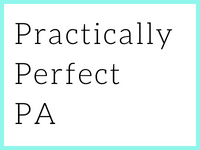The anatomy of conflict: A guide for Assistants
Conflict is an inevitable part of any organisation. It may emerge intermittently or bubble under the surface of daily interactions, ultimately flaring up during intense discussions. A disagreement can quickly escalate into a conflict, especially when emotions become involved. This is often where the drama begins to permeate the workplace. But what exactly is the anatomy of conflict? And how can we manage it effectively?
Understanding conflict
Conflict can be defined as a state of disagreement or opposition between two or more parties that arises when different goals, values, or beliefs are perceived as incompatible. The situation becomes even more complex when the subject matter is emotionally charged for one or more parties involved.
It’s crucial to understand that conflicts often infiltrate decision-making processes or problem-solving sessions, creating tensions and disagreements among stakeholders. This is where different conflict styles come into play. By understanding these styles, you can gain insight into how you deal with conflict while predicting how others may react.
Decoding conflict styles
Each conflict style has its own set of strengths and weaknesses. Recognising these patterns can foster trust and rapport with your team or your Executive.
There are five primary conflict styles: competing, collaborating, compromising, avoiding, and accommodating.
- Competing: This style involves one person striving to win or dominate the other party. While it can be helpful in emergencies where quick decisions are needed, it often damages relationships and reduces trust.
- Collaborating: Collaboration is excellent for generating new ideas and solutions. Although it can create strong relationships and increase trust, it can also be time-consuming and challenging to implement when power imbalances exist.
- Compromising: This is the “middle ground” solution. While it can lead to a quick resolution and help maintain relationships, it may not provide the best solution or address underlying issues.
- Avoiding: This common style involves avoiding conflict and not addressing underlying issues. Although it may maintain relationships in the short term, it prevents essential issues from being handled and can lead to missed opportunities.
- Accommodating: This style involves one party yielding to the other’s demands. It can maintain relationships and prevent escalating conflicts, but it often fails to address the issues thoroughly and can perpetuate power imbalances.
Understanding these styles can illuminate the underlying dynamics of conflict within your team or organisation. It might also help you recognise your tendencies in dealing with conflict.
Root causes of conflict
As an Assistant, you might encounter conflicts stemming from miscommunication, differing personalities or work styles, unclear tasks or expectations, unmet boundaries, limited resources, and external pressures. Identifying the root cause of a conflict and the anatomy of conflict is critical to resolving it effectively.
Dealing with conflict
Here are some steps to manage conflicts effectively:
- Identify the root cause: It’s crucial to dig beneath surface-level issues and identify the root cause of a conflict.
- Seek outside help: A neutral third party can provide a fresh perspective and help facilitate a resolution.
- Practice active listening: Pay attention to what the other party is saying. Understanding their perspective can open doors to resolution.
- Find a win-win solution: Strive for a resolution that satisfies both parties. This often involves collaboration and mutual respect.
Understanding the nuances of conflict and being equipped with effective resolution strategies can create a more harmonious, productive workplace environment. Despite the inherent challenges of conflict, it also provides an opportunity for growth, learning, and strengthening relationships. Embrace these opportunities and turn the seemingly negative aspect of conflict into a tool for positive change.





